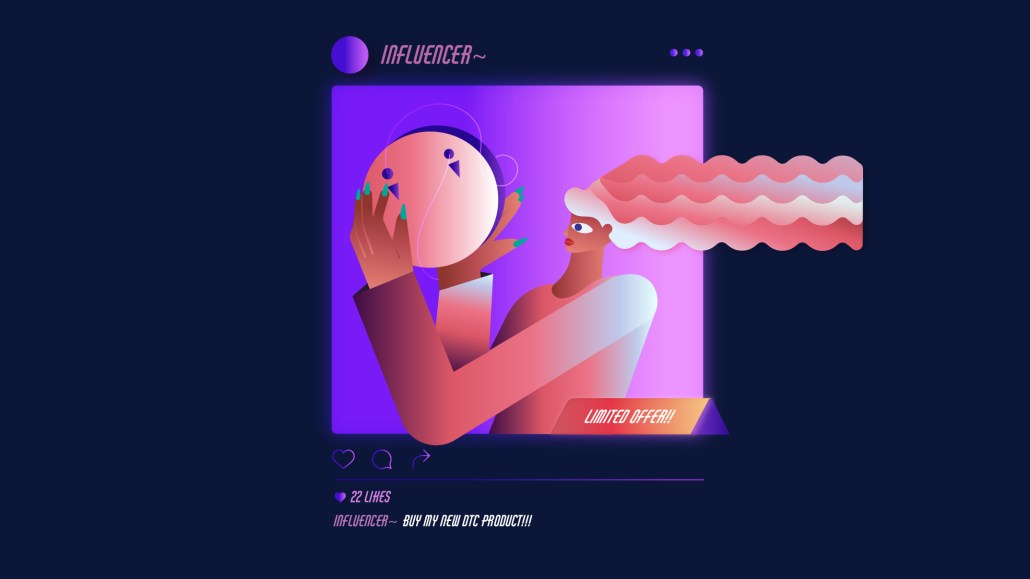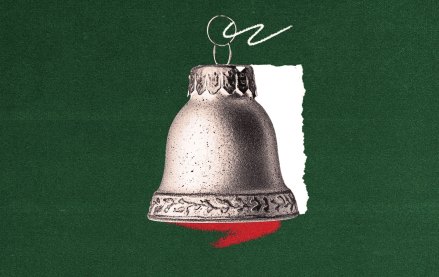Marketing Briefing: Inside the evolution of celebrity brand partnerships

This Future of Marketing Briefing covers the latest in marketing for Digiday+ members and is distributed over email every Friday at 10 a.m. ET. More from the series →
The marketing playbook continues to be rewritten. In an increasingly fragmented cultural landscape, that reevaluation is coming to celebrity partnerships which has marketers rethinking who they partner with and how.
Take Nike’s new partnership with Kim Kardashian, on a new women’s activewear brand called NikeSkims. The New York Times’ likened it to that of Michael Jordan and Nike, which long has been seen as the creme de la creme of brand partnerships and celebrity endorsements as it allowed Nike to not only enter a new market (basketball) but to cement its brand within culture. Could Kardashian’s shape wear brand be the next?
While Kardashian may not have the athletic prowess of Jordan, “she is the Michael Jordan of modern brand building,” explained Grace Murray Vazquez, executive vp of strategy at influencer marketing shop Fohr, adding that Kardashian has taken an “audience first” approach, constantly posting on social media, asking viewers what they want from the brand. Skims, which was founded in 2019, scored a $4 billion valuation in 2023. Product from the new brand will reportedly be released this spring. Nike’s partnership with Kardashian follows its return to the Super Bowl after 27 years with a spot focused on women. The Kardashian partnership is also recognition of the changing nature of “where brand building is going as it relates to marketing and influence,” added Murray Vazquez.
“Brand marketing is moving away from acting as the musician to conductor,” said Murray Vazquez. “Energy, aesthetic, tone, brand strategy, all of those things need to be defined by the brand. But the way it reaches people is through the celebrities who are cast, the influencers who are cast, how they’re engaged and the creative direction they’re provided.”
How brands engage with celebrities will vary by brand and category as well as the brand’s objective for the partnership. There are still the different traditional rungs of an inked partnership or endorsement deal, naming a celebrity as a creative director (RayBan just named A$AP Rocky as its creative director last week) as well as more one-off or short-term engagements. Sometimes those engagements are used by marketers to fast-track a brand perception shift. (It’s worth noting that brand partnerships today can be tricky territory for celebs and brands to navigate. Late last week, rapper Stormzy faced backlash to his partnership with McDonald’s with the rapper having to defend the partnership on social media despite his previous statements in support of Palestine.)
Marketers are also more keen to work with celebrities who own their own brands and have found success as their own brand leaders, noted marketing execs and agency execs, as the business acumen and fanbase of a celebrity’s own brand adds to their appeal.
Modern marketers understand that random celebrity partnerships won’t move the needle for them in today’s landscape, explained marketers, brand consultants, agency execs and talent partnership agents.
“It was really important to me that we did this super authentically,” said Andrea Sengara, vice president of marketing for Campari America, parent company for Grand Marnier, of the brand’s new partnership with rapper and singer-songwriter Future. “I did not want to be a brand that slapped on a partnership in the hopes of achieving different results for us. This was, who was really the right person? And then how do we together co-create something that’s authentic to who Future is and helps bring to life some of the key things we want to accomplish.”
While there are certainly still marketers who seek celebrity partnerships just to have a celebrity, those kinds of partnerships “almost never work” in today’s marketing ecosystem, explained Douglas Brundage, founder of brand consultancy Kingsland. Instead, some of the smartest celeb partnerships will help a brand launch into a totally new category.
Overall, there’s “dramatically more use of celebrities” from marketers today — whatever that use looks like — because marketers recognize the need to use those celebrities to breakthrough in an “exponentially more noisy” marketing landscape, said Nick Miaritis, chief client officer at VaynerMedia. That this year’s Super Bowl commercials once again featured a glut of celebrities is one sign that 2025 will continue to be a big year for brand and celebrity partnerships as it can be a bellwether for those relationships, noted Miaritis.
Like with any creative partner, both marketers and celebrities need to have clear guidelines on what the partnership’s goals and how they’ll work together, explained execs. That work can range, from naming a celebrity to a creative director role to working with celebrities like traditional creators, asking them to create content themselves or share success metrics. Most importantly, a marketing team needs to make sure the celebrity has similar brand values. “The audience has become really smart,” said Lauren Nogy, endorsement agent at UTA. “Before the rise of social media, you wouldn’t know if a [celebrity] was a fan of the brand whereas now you do.”
Today’s consumer will know what brand partners that celeb has, some of which could take a “volume” approach to partnerships (similar to brand marketers), explained Megan McMahon, head of Platinum Rye Entertainment, The Marketing Arm’s celebrity procurement shop.
“There was a very rote formula for a long time of how people structured their deals,” said McMahon, adding that brands would have a “face of the brand” under contract for years, without revealing exact figures. Now, multiple people could be under contract at any given time.
Any sort of chatter surrounding a celebrity could help determine whether a partnership is feasible, said Murray Vazquez. “So much of social media has become almost like cultural processing where people are consuming and then analyzing or discussing culture together and reacting to it together.”
3 Questions with Alyson Griffin, head of marketing, State Farm
You recently worked with Severance creator Ben Stiller and star Adam Scott to create a new ad in the Apple TV show’s universe. Why choose Severance as a vehicle to reach consumers? The show’s been well-received, but hasn’t drawn huge audiences.
We want to be in culture. We’re an insurance brand; we don’t think people are going to wake up in the morning and go, “Oh, I wonder where State Farm is today and what they’re up to.” We know that. But because of that, we have to be as creative as we can to catch attention and to captivate people that we are trying to target. With Severance in particular… this show is really cool, and it’s being talked about a lot, at least in the U.S.
How do you pull off a collaboration like this that actually connects with viewers of the show?
If we’re going to do something like this, then we have to do it right. That means working with them [Apple], not a knock-off. We [State Farm and Apple] each understood the importance of keeping true to the assets. What do I mean by that? Ben Stiller, the executive producer and director, directed the spot. Adam Scott is in the spot. And because we were working so closely with Ben, we got the actual set, not a replication.
Severance isn’t the only show drawing brand collabs; Netflix previously worked with Duolingo and Just Eat on Squid Game ads. But both shows contain some critical political themes about work, business and capitalism. Do you factor those elements into your marketing decision-making?
All day, every day. We’re in the risk business — worrying about every little thing is what we do best. We aren’t in the business of picking an opinion, but we are in the business of serving more people and helping more people in more ways. So we factor all of it in, we make a calculated decision. Everything is a risk in the eyes of my company. And we decide whether we can take that risk. It is very targeted. We’re not putting this in championship football spots, right? We are targeting, with data from Apple, where Severance fans are, which makes it less risky. — Sam Bradley
By the numbers
As with each generation, marketers are determined to figure out what Gen Z, and incoming Gen Alpha, finds cool. Marketers have recently been retooling their own strategies to make breakthrough cultural moments as opposed to just advertising around them. A new study from marketing agency Team Epiphany takes a look at the so-called cool factor. See findings from the study below:
- 61% of respondents believe the creator economy forces creators to conform to trends to succeed, therefore disregarding creators’ personal style/values/creativity.
- 95% of respondents said that something is cool based on their own feeling based on the quality, look and feel, vibe, and other elements around it.
- 53% of respondents are from 18-34 years old. —Kimeko McCoy
Quote of the week
“Search used to be this totally safe bet, right? Now it’s moving away from being a slam dunk.”
— Matt Allfrey, head of SEO, EMEA at media agency PMG, when asked about the changing nature of search habits and the impact for marketers.
What we’ve covered
- Streaming TV ad rates are falling and Amazon’s the anchor
- Snapchat’s SMB bet is paying off — but can it keep up the momentum?
- AI Briefing: The FTC is leaning into ‘tech censorship’
More in Marketing

Pandora is betting on AI agents to scale service and emotional selling during the peak holiday season
Pandora is using AI agents to scale customer service and replicate emotional in-store selling online, just as peak season puts pressure on margins and teams.

Rembrand’s CEO wants to grow virtual ad placements in streaming, and he’s looking elsewhere for models
Omar Tawakol wants to improve advertising within the streaming world, and is working with advertisers and publishers to improve that experience.

Marketers are keen to use generative AI in ad campaigns, but hidden costs lurk
Marketers across the industry want to use AI to cut down on time spent in creative production. It’s not so simple in practice.







